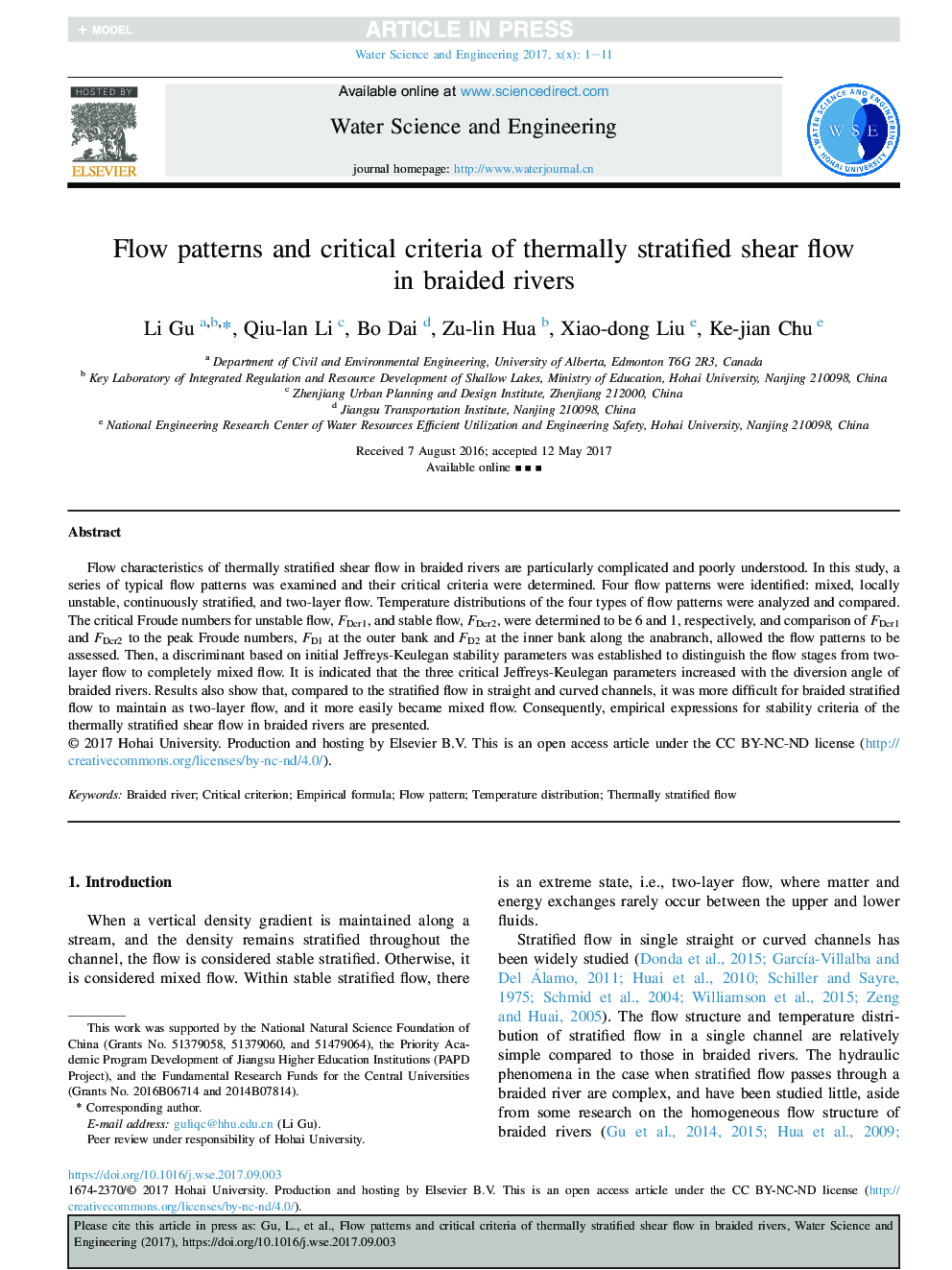| Article ID | Journal | Published Year | Pages | File Type |
|---|---|---|---|---|
| 6784620 | Water Science and Engineering | 2017 | 11 Pages |
Abstract
Flow characteristics of thermally stratified shear flow in braided rivers are particularly complicated and poorly understood. In this study, a series of typical flow patterns was examined and their critical criteria were determined. Four flow patterns were identified: mixed, locally unstable, continuously stratified, and two-layer flow. Temperature distributions of the four types of flow patterns were analyzed and compared. The critical Froude numbers for unstable flow, FDcr1, and stable flow, FDcr2, were determined to be 6 and 1, respectively, and comparison of FDcr1 and FDcr2 to the peak Froude numbers, FD1 at the outer bank and FD2 at the inner bank along the anabranch, allowed the flow patterns to be assessed. Then, a discriminant based on initial Jeffreys-Keulegan stability parameters was established to distinguish the flow stages from two-layer flow to completely mixed flow. It is indicated that the three critical Jeffreys-Keulegan parameters increased with the diversion angle of braided rivers. Results also show that, compared to the stratified flow in straight and curved channels, it was more difficult for braided stratified flow to maintain as two-layer flow, and it more easily became mixed flow. Consequently, empirical expressions for stability criteria of the thermally stratified shear flow in braided rivers are presented.
Related Topics
Physical Sciences and Engineering
Engineering
Civil and Structural Engineering
Authors
Li Gu, Qiu-lan Li, Bo Dai, Zu-lin Hua, Xiao-dong Liu, Ke-jian Chu,
